Eyes-on: AMD Shows 3D Capabilities With HD3D
Yesterday we visited AMD and showed you the new Eyefinity 5x1 setup running Dirt 3 and Dragon Age 2. Today we're going to tell you about what we saw from AMD's answer for the burgeoning 3D market.
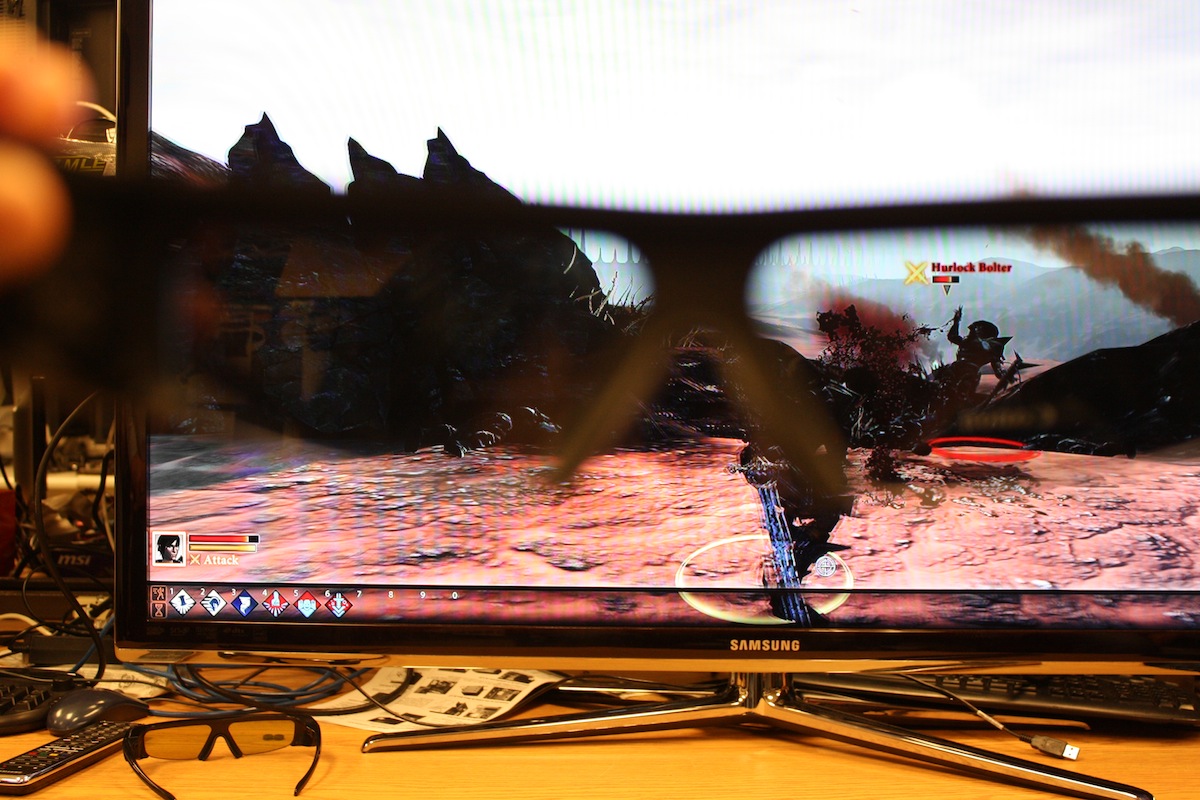
While Nvidia's been playing in the 3D space for quite some time now with its proprietary 3D Vision technology, AMD's been holding off in what it feels is in the best interest of the industry and ultimately the consumer.
AMD's 3D technology for its Radeon HD products conform to industry standards – most notably right now is HDMI 1.4a. Sadly, this doesn't include a lot of desktop monitors on the market today, but it does include essentially every new 3D HDTV in existence today.
AMD calls its 3D Radeon HD technology HD3D, and we got to go eyes-on. The first thing we saw was the 3D Blu-ray Disc movie "Cloudy With A Chance Of Meatballs" using an HD3D-enabled version of Arcsoft's TotalMedia Theatre player. Impressively, the 3D content played inside a window on the desktop, and could be moved about the screen while maintaining the effect.
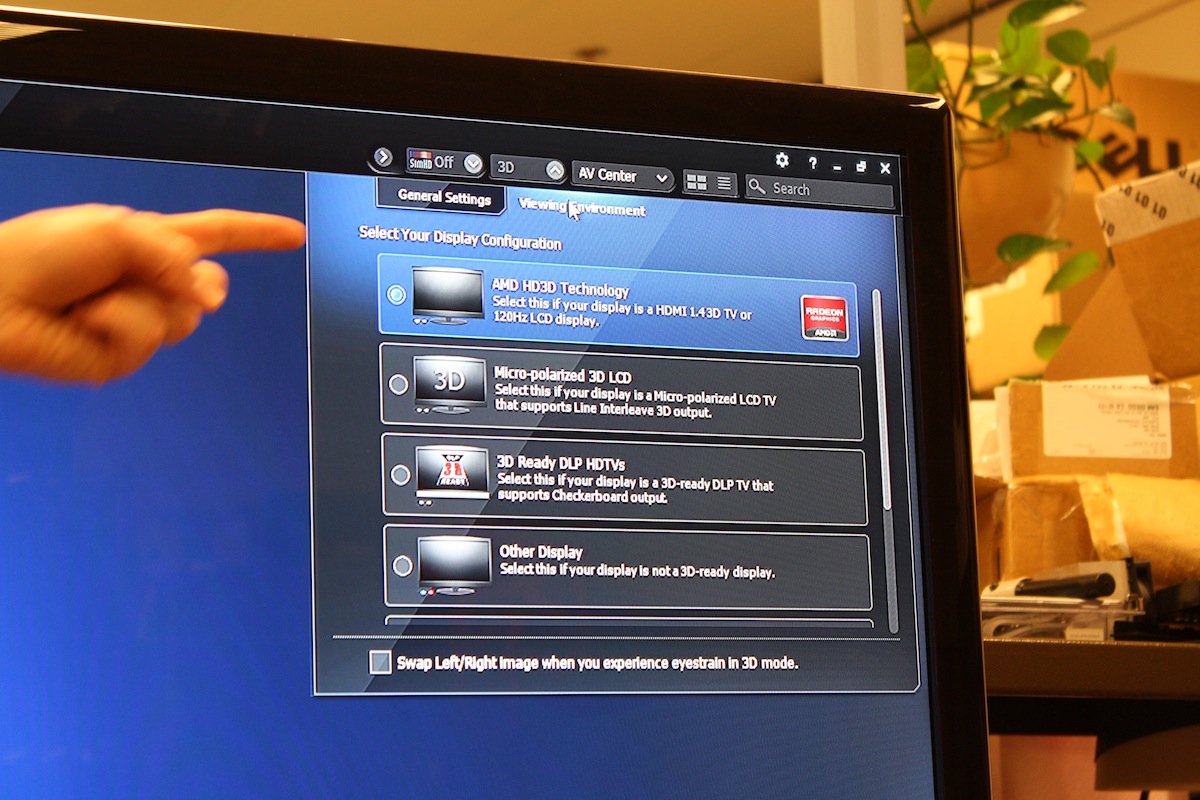
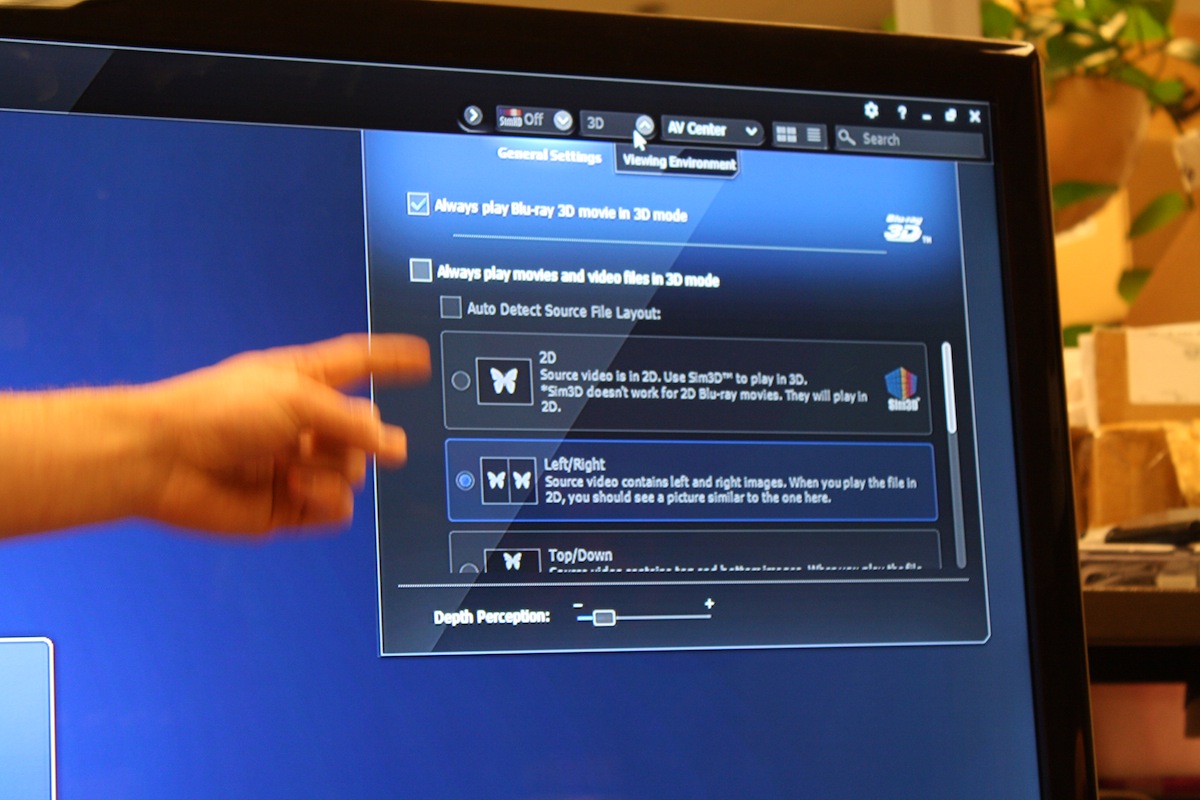
For those who absolutely want to multitask even while wearing a pair of 3D glasses, you can watch a movie in 3D in a window while maintaining a 2D desktop for other tasks. All of this was achieved on a Samsung 3D HDTV, which used the bundled Samsung 3D glasses – another proof of AMD's use of industry standards.

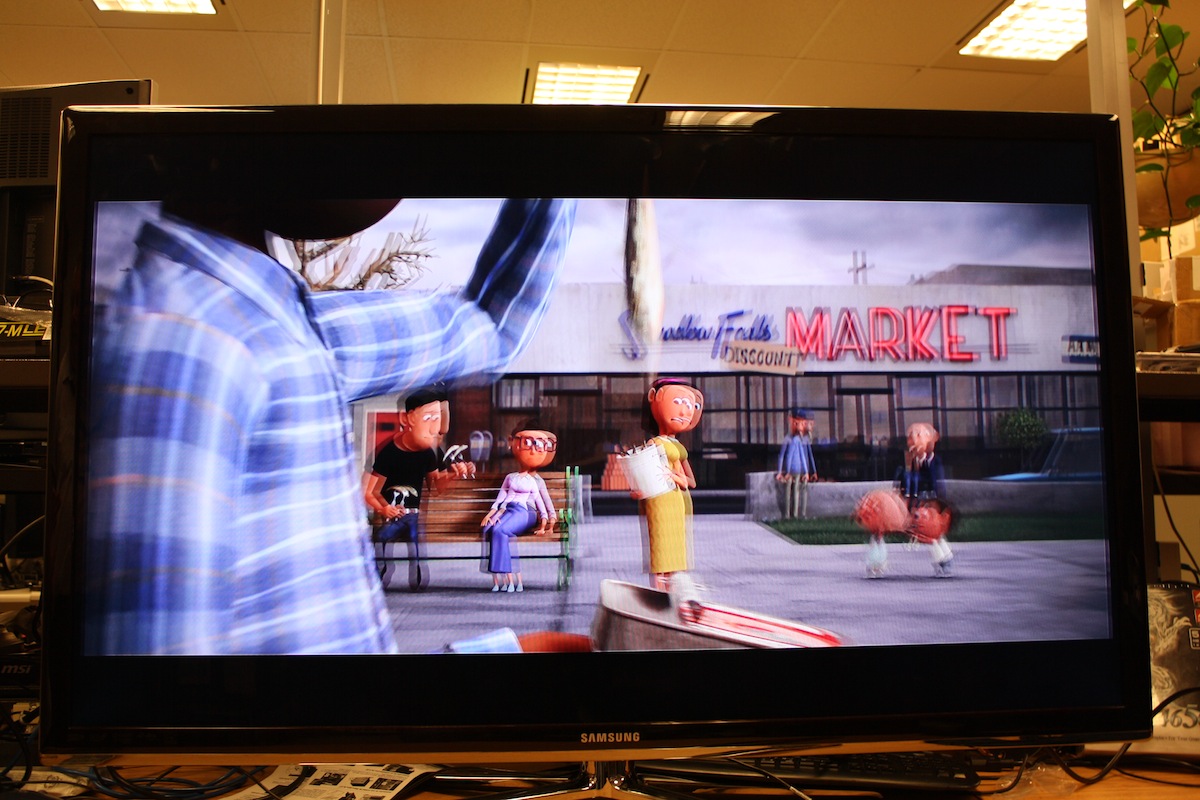
Unlike Nvidia, AMD relies on the 3D profiling work of an outside company to make 3D magic happen. We were shown Dynamic Digital Depth's (DDD) TriDef 3D Experience software, which had tons of presets for games and applications. AMD claims that over 400 titles are supported right now through TriDef profiles, so that's comparable to what Nvidia is offering with 3D Vision.
A demonstration of Google Earth was fired up, and there was no better city on the continent to highlight 3D other than New York. The 3D effect worked well on Manhattan, showing off all the skyscrapers of the island. To more tranquil surroundings we virtually headed next, off to the Rocky Mountains of British Columbia. There too it showed the terrain in full three dimensions.
Get Tom's Hardware's best news and in-depth reviews, straight to your inbox.
Next, we were shown games, which only run in 3D while in fullscreen mode. Dragon Age 2 took the stage again, and it worked quite impressively in 3D. The 3D profile was actually created for the first Dragon Age game, but it worked quite well for the sequel. (Sadly, nothing we can write here, or even show in photographs will truly convey what 3D gaming is like until you see it – and the same goes for Nvidia's 3D Vision too.)
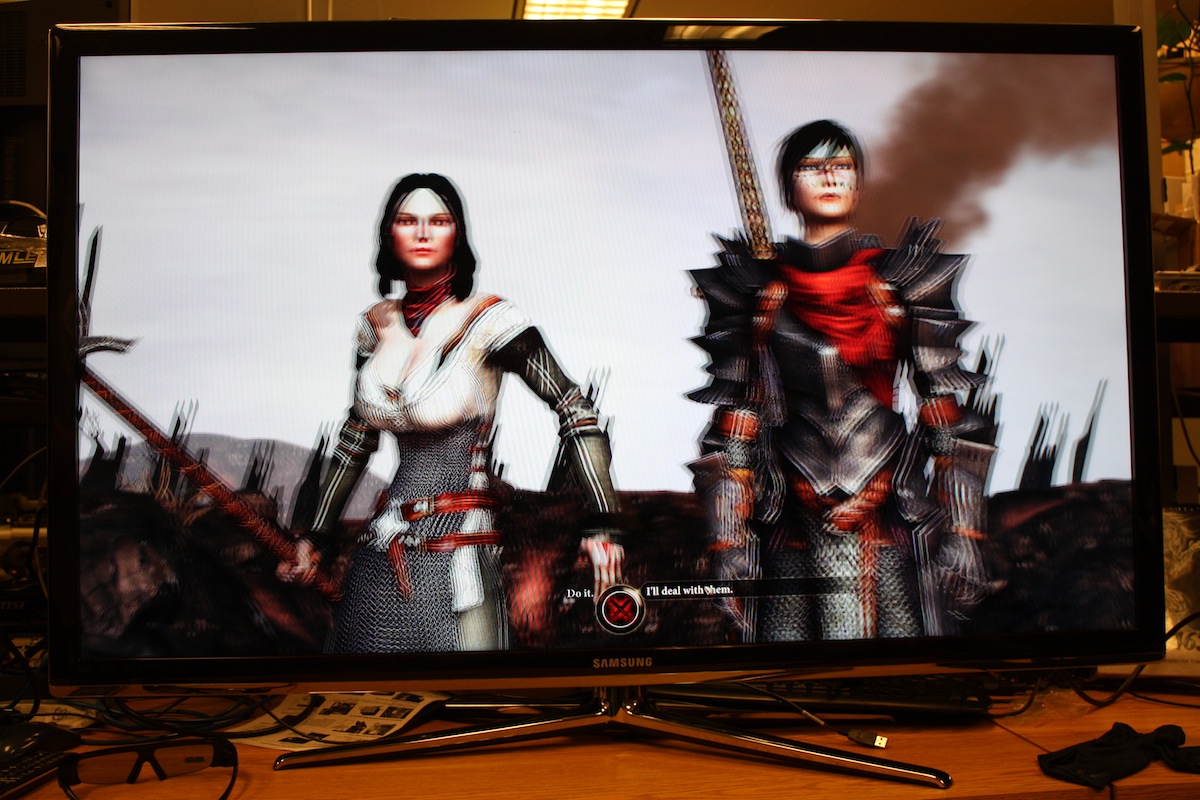

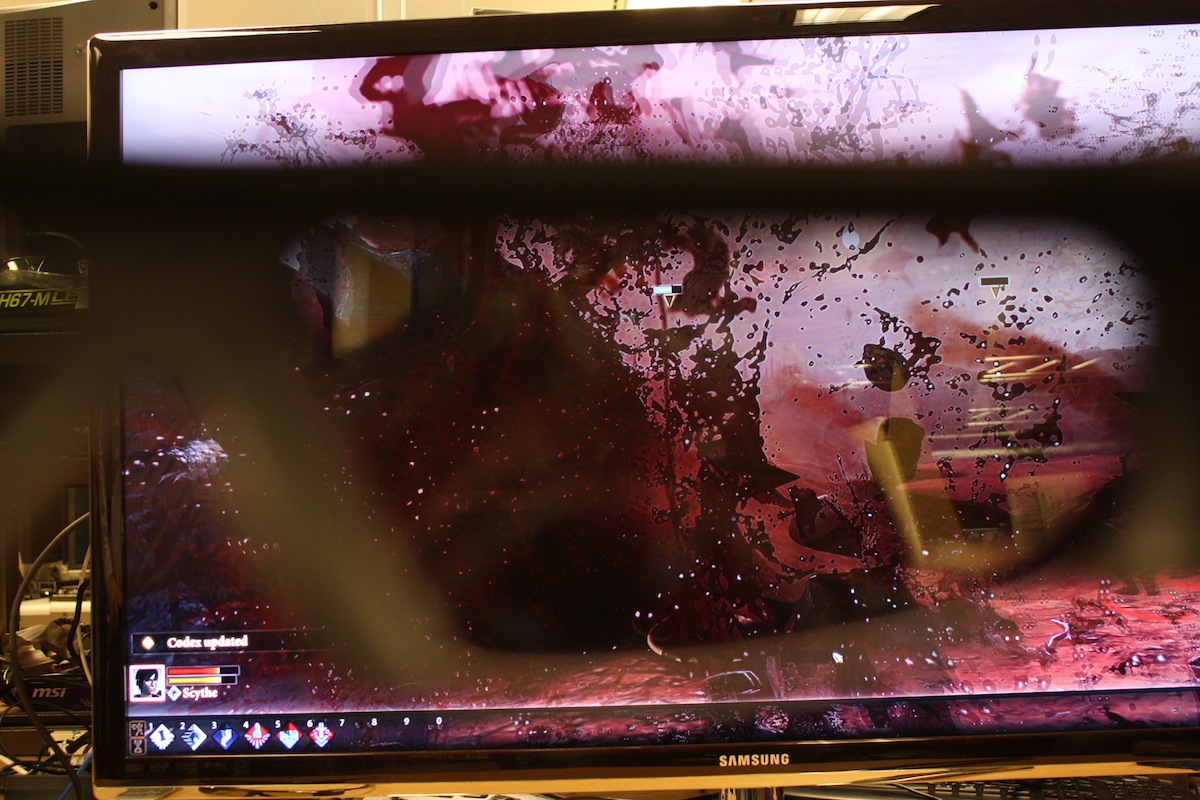
Then we saw another Codemasters title, F1 2010. Performance there lagged a little bit as it had to render twice as many frames. Afterwards, we wanted to see how a first-person shooter would look on the big Samsung LCD HDTV. AMD didn't have any pre-setup on its demo machine, so we got to see the process of how a TriDef 3D profile is attached to a game.
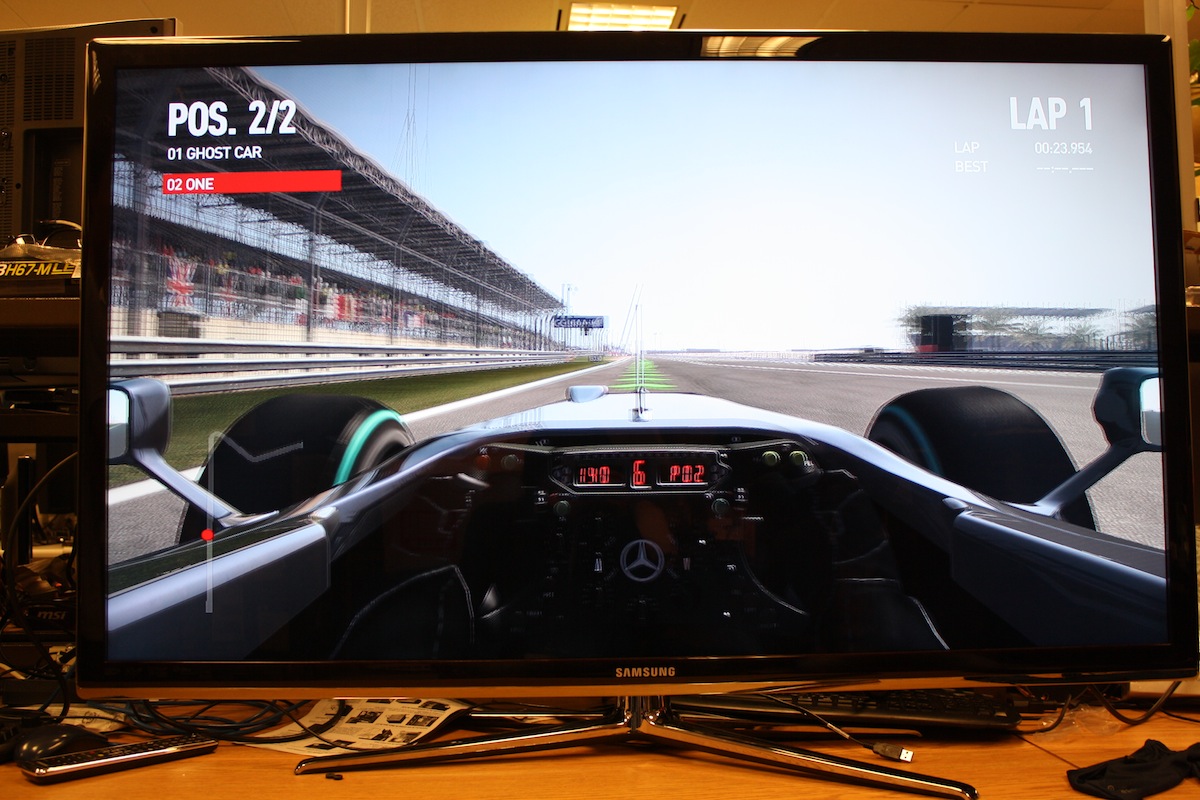
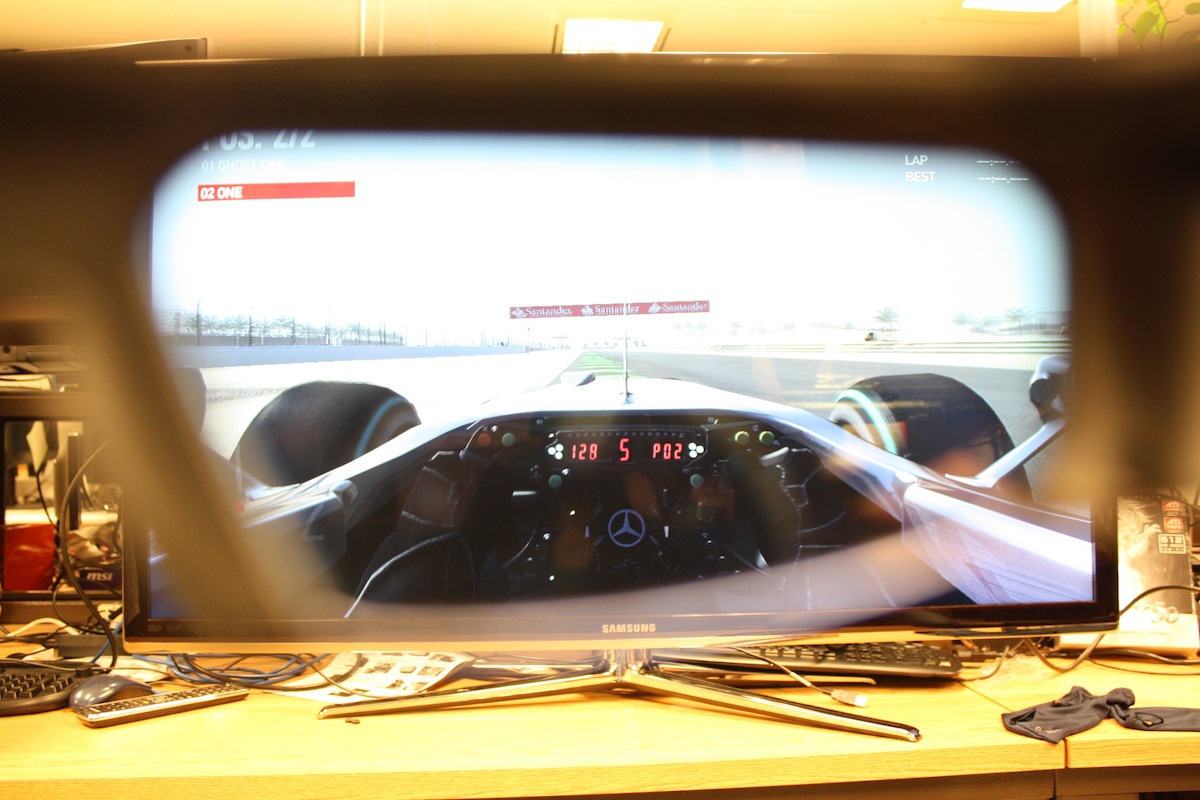
Simply, the TriDef 3D program is pointed to the game's executable, and then a dropdown menu scrolls to the game in question – which in this case was Medal of Honor. From the launcher, we jumped into the game and it was in full 3D. The game's subtitles were a bit too close on the focal plane, but the gameplay was set just fine.
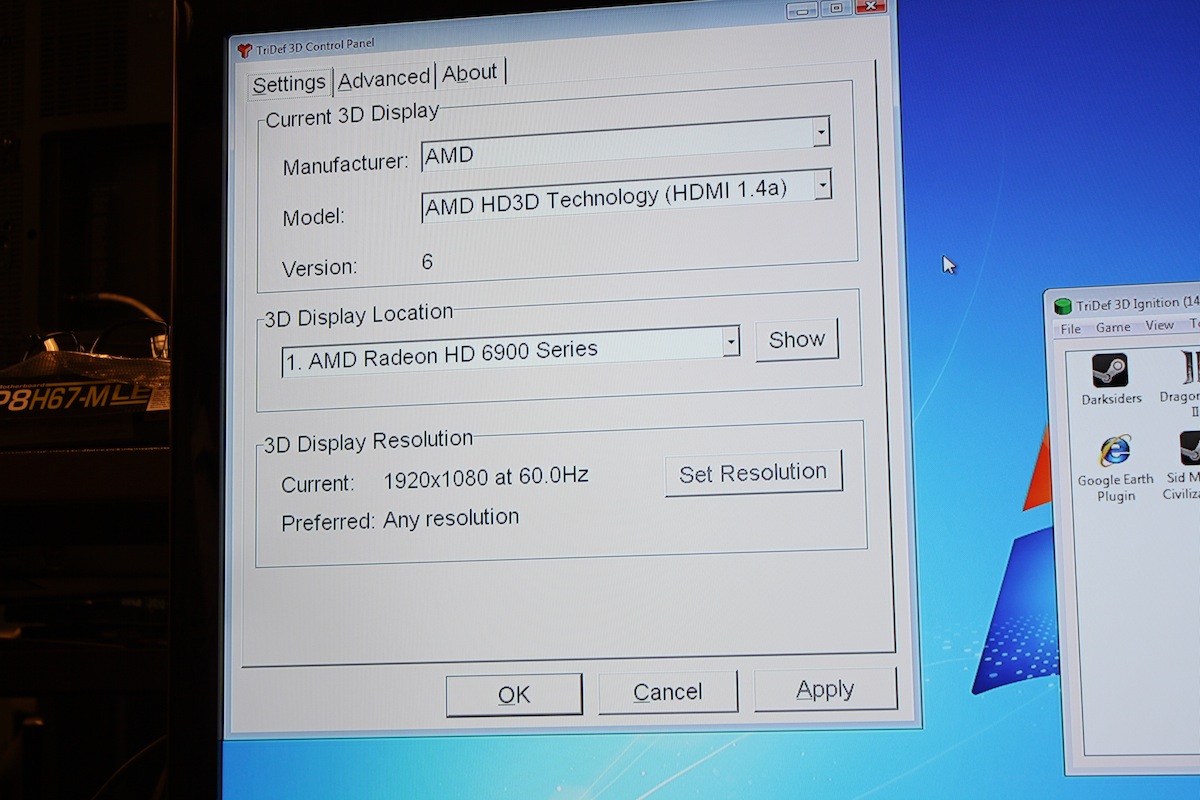
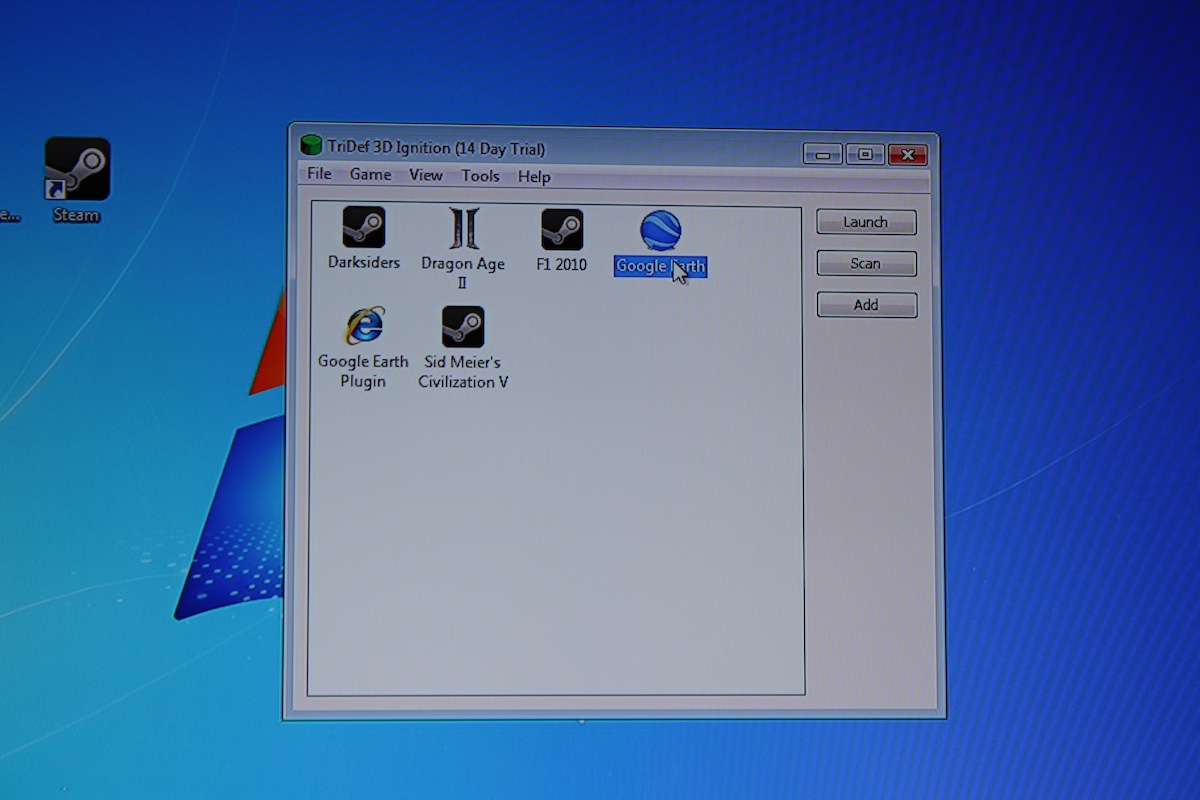

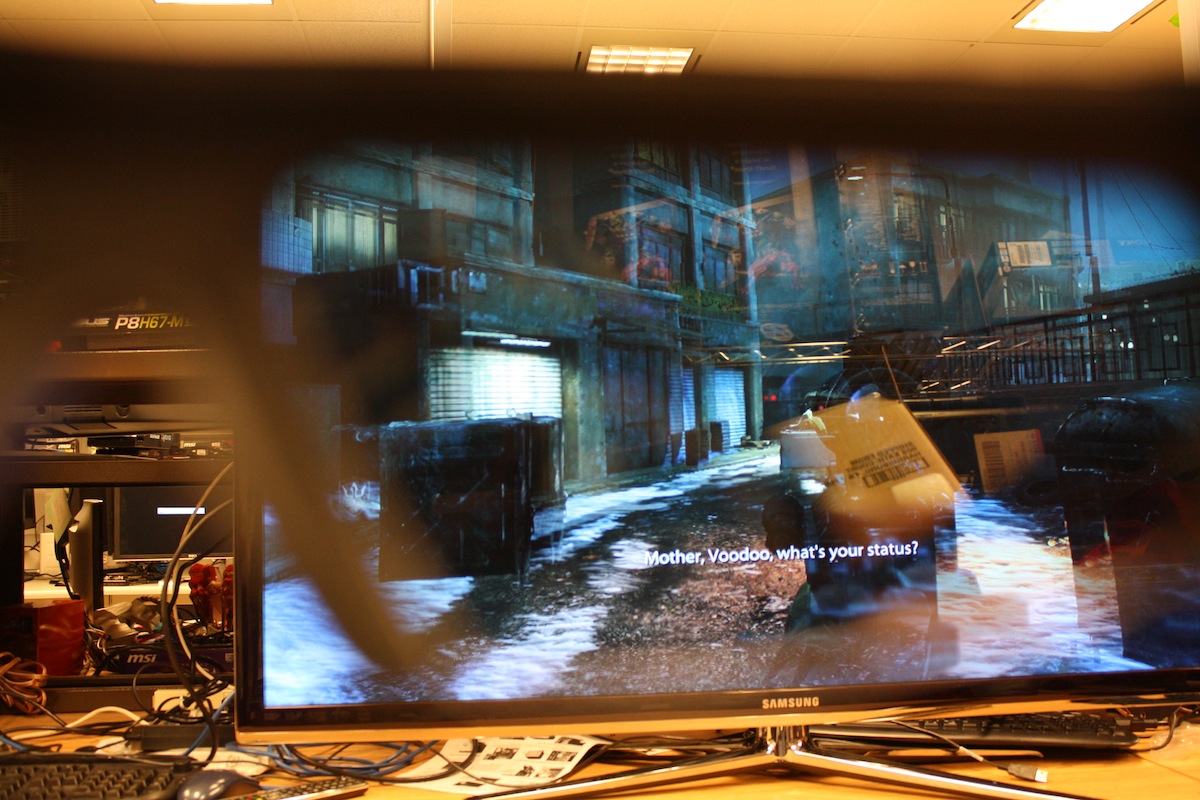
All in all, AMD's HD3D system works quite well. The key differentiator that the company is pushing is that it'll work with standards, which is great for those who have a 3DTV and want big screen gaming.
There is, however, a limitation to this too. Because AMD utilizes the HDMI 1.4a specification, which boasts a maximum TMDS throughput of 10.2 Gb/s, you can either game in stereo at 720p maxing out at 60 frames per second per eye, or you can game at 1080p with up to 24 frames per second per eye. That's actually pretty severe, considering we've been playing around with 5760x1080 using 3D Vision Surround and dual-link DVI connectors (each display running at 1920x1080). AMD says it'll transcend the shackles of HDMI 1.4a later this year when more monitor vendors begin incorporating DisplayPort 1.2. A peak effective bandwidth of 17.28 Gb/s is enough to enable 1080p at 60 frames per eye.
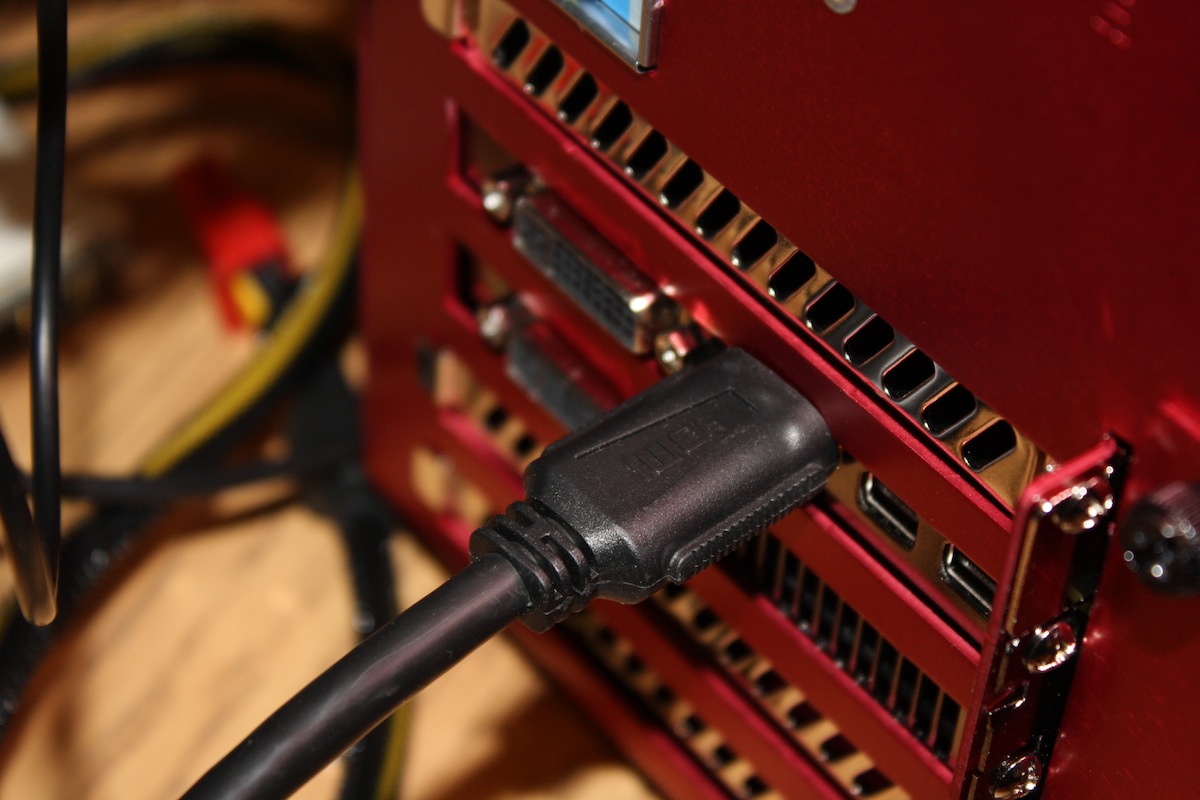
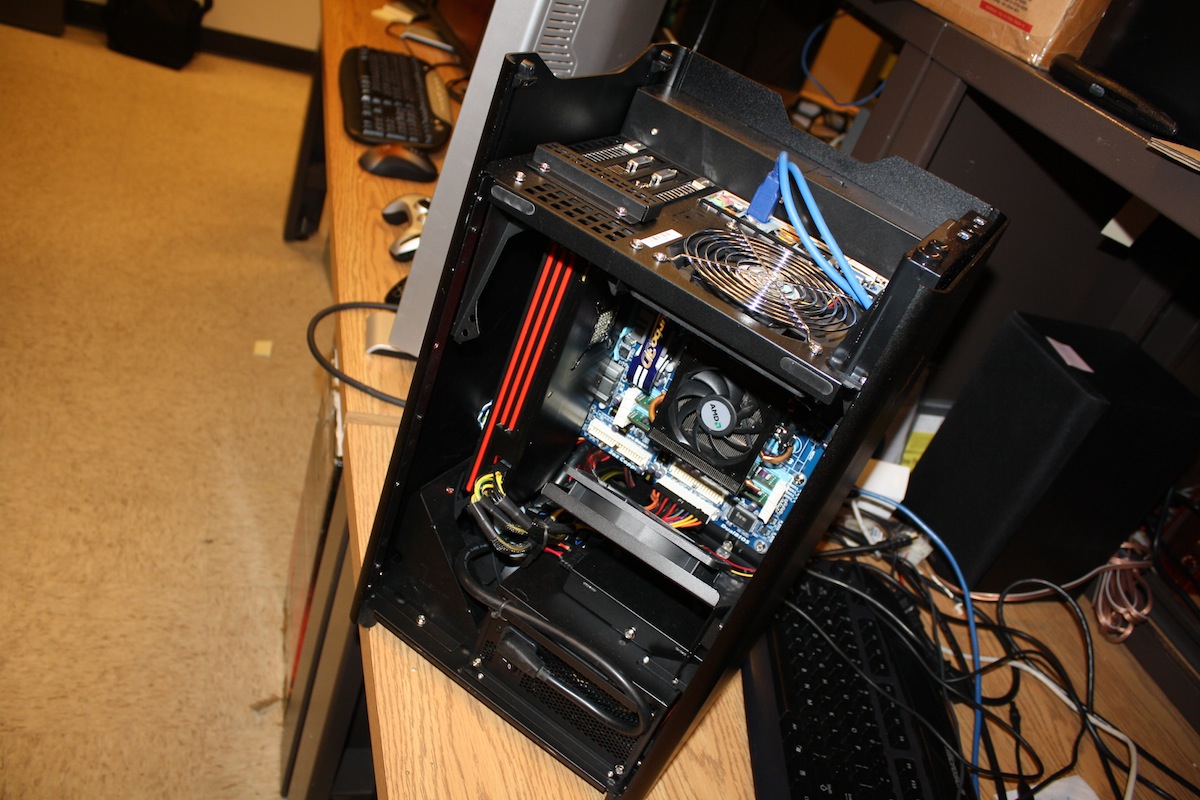
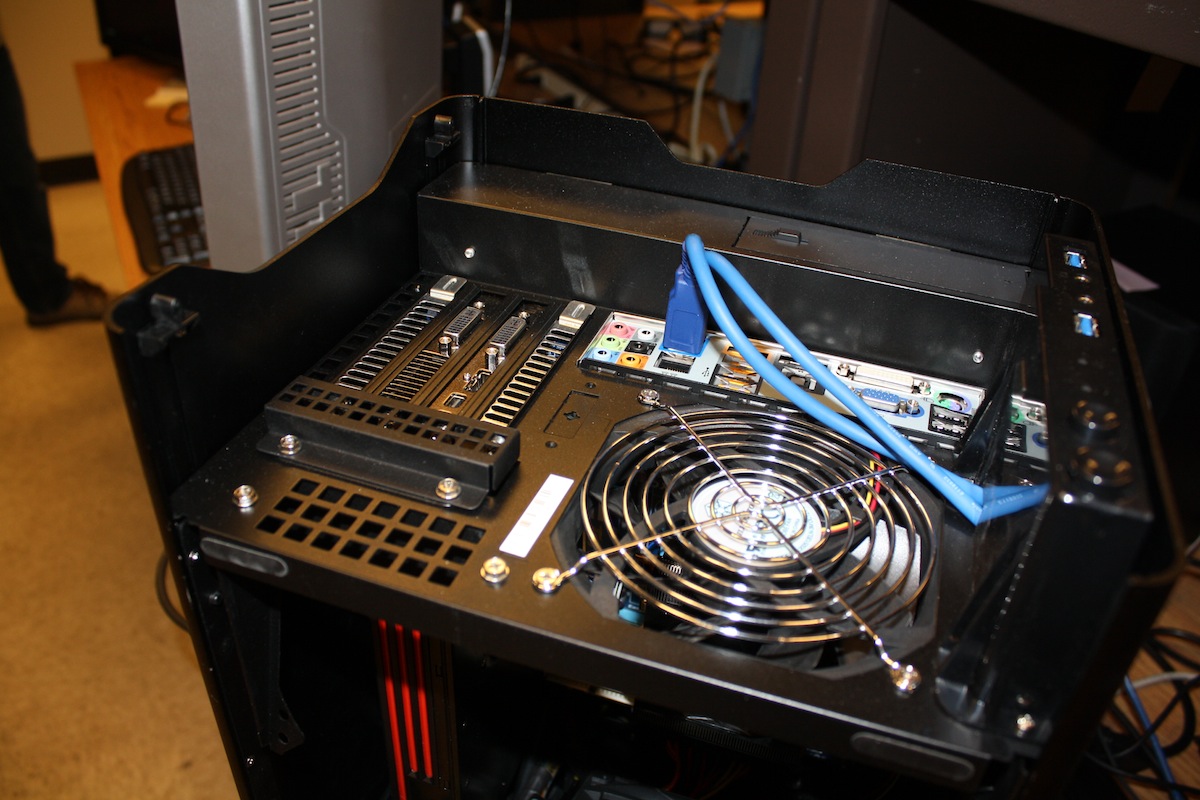
It’s important to mention that Nvidia can also handle stereoscopic 3D on commercial displays over HDMI 1.4a with the release of its 3DTV Play driver. This driver is now available as a free download for 3D Vision owners, and will be bundled in a number of products, such as the XPS laptops from Dell. If you want to enable 3D playback on your compatible television, but don't want to buy the 3D Vision kit, the 3DTV Play should be available for purchase from Nvidia.com for $39.99. Keep in mind that this driver will work only on newer GeForce models that can handle the HDMI 1.4a standard. Also note that, if you're using 3DTV Play over HDMI, you'll suffer the same resolution/frame rate limitation as AMD's Radeon HD 6800-series boards. Only by switching to a dual-link DVI output can you overcome that.
With this information in hand, let’s consider costs. If you want to watch Blu-ray 3D, you’re going to have to pay for Blu-ray 3D playback software, regardless of the graphics card. With an Nvidia card, you need to purchase the $40 3DTV Play driver from Nvidia at least or a $149 3D Vision kit at most. The interesting part is that AMD has actually bypassed any proprietary expense, so Blu-ray 3D playback is that much cheaper on Radeon cards.
Having said that, Nvidia includes the stereoscopic game driver with 3DTV Play and 3D Vision, while AMD hardware requires a third party game driver from DDD or iZ3D. DDD now offers its TriDef gaming driver to Radeon 6000 series owners for $24.99, and iZ3D offers their driver to Radeon 6000 series owners for $19.99.
While AMD was late to join the 3D arena, we saw first-hand proof that there's a fully-working solution now available for your 3D cravings.
Stay tuned for a more in-depth comparison between AMD's HD3D and Nvidia's 3D Vision. Until then, you can read more here in our original Radeon HD Barts review.
-
dragonsqrrl "or a $200 3D Vision kit at most"Reply
An update on the price... Apparently the new kit comes with updated hardware as well, including longer battery life. Also a $50 price drop...
http://guru3d.com/news/nvidia-3d-vision-kit-becomes-cheaper/ -
I have 50" Panasonic 3d TV, Onkyo Receiver 5.1 , HD5850, x6 Phenom @3.8ghz and 8GB ram running DDD drivers and following games work flawlessly, 24 fps per eye is plenty fast enough!Reply
1 LOTRO
2 Grid
3 NFS Carbon and Pro Street
4 F1 2010
5 FSX
6 Crysis
7 Prey
8 Call of Juarez
9 CIV IV
10 GTA IV (Mind Blowing in 3d)
11 Sins of a solar empire
12 Hawx
13 Company of Heroes
14 Far Cry II
15 Mass Effect
16 Bioshock I andII
17 CoD WoW
To every person who mumbles 3d is a fad, keep on mumbling whilst I keep on gaming in full 3d!
Also you can play any DVD in 3d as well as view your pictures in 3d, fantastic, best £3000 spent ever!
-
Forgot to mention, only problem I have encountered is AA brings my 5850 to its knees in some titles running 3d 1920x1080, such as crysis and funnily enough LOTRO, I think 1GB VDDR just not enough in some titles for aa and 1080 3d! Time for that 6950 I guess!Reply
-
Transsive Sigh, 24 fps, hdmi fail.Reply
I'm hoping to try 120fps in 2D in the future. 60 fps in 3D would be interesting too I guess.
-
Trialsking foogooThe third d has very little effect on me.Yeah can't wait for this fad to end. Or maybe it will be around like HDDVD's, oops...Reply -
schmich moricon24 fps per eye is plenty fast enough!I'm sorry but 24fps is way too slow for fast games, for the rest sure.Reply
-
iam2thecrowe schmichI'm sorry but 24fps is way too slow for fast games, for the rest sure.you would probably have to use it for yourself to make your mind up on that. 24fps steady is not to bad since with vsync it will pretty much remain at 24fps, no more no less. but agreed that ATM its for spoilt rich kids and 3D enthusiasts, definitely not for most people. Also that 24fps cap is due to the hdmi interface so future improvements will be there when 3d become4s cheaper and more popular. I still havn't seen it for myself to pass judgement.Reply -
Seikent TranssiveSigh, 24 fps, hdmi fail.I'm hoping to try 120fps in 2D in the future. 60 fps in 3D would be interesting too I guess.120 fps for 2D rocks with Vsync, it's pretty!Reply -
ProDigit10 if 1080p at 3d at 30fps is it's max, why not do 3D 1080i at 30fps?Reply
With a small redirection the 1080 vertical pixels can be remained, and the 1900 pixels horizontally can be divided in 2, 950pixels per eye.
